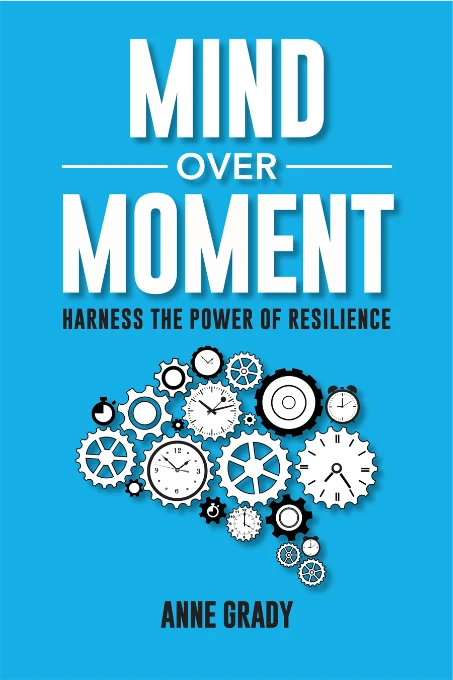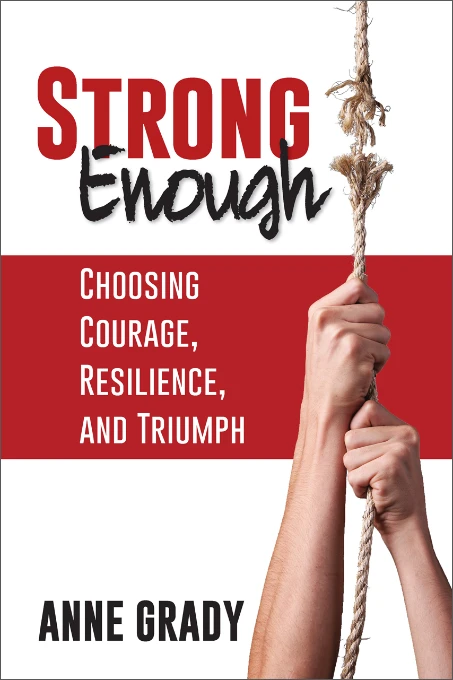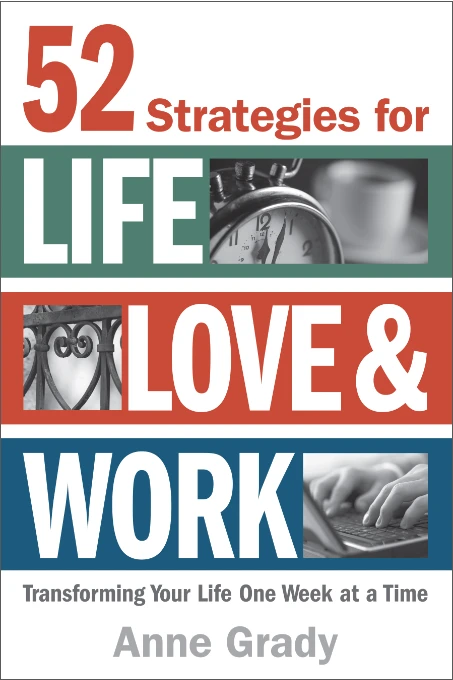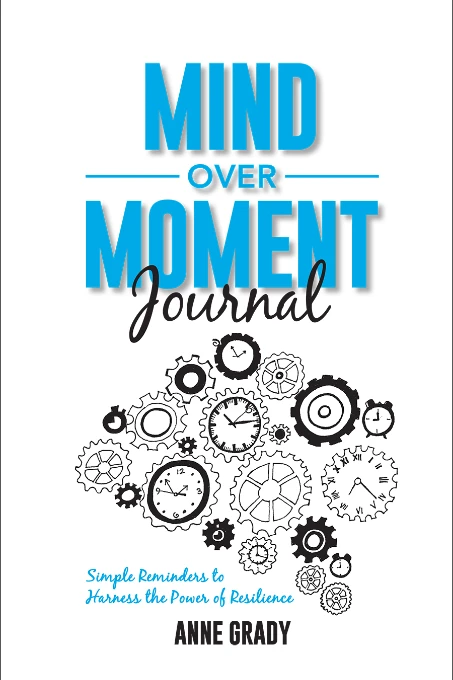A How-To Guide for Building Resilience in The Future of Work
A How-To Guide for Building Resilience in The Future of Work
A How-To Guide for Building Resilience in The Future of Work
The last couple of years seem like they were pulled straight from a sci-fi movie. While we weren’t taken over by cyborgs, everything we knew about our world, our routines, and our way of working changed in an instant. For a long period of time, people talked about “going back to normal”, but after such an extended period of uncertainty and change, it is evident that the normal we knew will be different from the normal we know going forward.
Organizations and leaders are scrambling as they try to do more with less, stretch limited resources, address burnout, create a culture of inclusivity and engagement, and balance employee mental health in the process.
To find and retain great talent, foster diversity and inclusion in new and different ways, and reshape the employee experience, we will need to up-skill, re-skill, and revamp the way we work.
Regardless of industry, employees, leaders, and teams are going to need greater resilience, grit, and agility to navigate it all.
While it might feel like we are fixing the plane while flying it, there are simple, actionable strategies that can build our psychological immune systems to embrace our new world of work.
Here Is Your How-To Guide:
1. Value EQ over IQ
Of course we want really smart people working to solve the toughest problems, but if those people cannot connect, collaborate, or inspire others, all of the smarts in the world won’t matter. Emotional intelligence is a set of skills that determine how you show up, you how you affect others, and how you handle change, uncertainty, and ambiguity. The next generation of employees and leaders will need to build skills to learn to regulate and manage emotions, grow emotional and mental agility, and foster empathy, trust, and connection to build and maintain relationships in a global, hybrid work environment.
If you are a leader tasked with promoting or bringing on new talent, ask behavioral-based interview questions rather than hypotheticals. For example, if I’m being interviewed and asked how I deal with conflict, I’m going to tell you all of the emotionally intelligent things I would do. But if you said, “Tell me about an emotionally heated conflict where you wished you would have handled yourself differently”, that provides insight to my level of honesty, authenticity, and self-awareness.
As a team member, pay attention to how your emotions drive your behavior. Is the room better when you enter it or leave it, and would your colleagues say the same thing? Tuning into our emotions allows us to be deliberate about the way we show up and interact with others. Self-awareness is a great first step, and seeking feedback is a good way to build it.
Unfortunately, our tendency to justify and defend our behavior often makes people hesitant to provide it. Instead of asking for feedback, try asking for advice. For example, “Can you give me one piece of advice for how I might better be able to communicate my ideas in meetings?”
Regulating emotions, adapting to change, and managing uncertainty are simply skills and muscles that we can build and grow. These are the skills that create more engaging, psychologically safe environments, the number one predictor of high-performing teams.
We speak at approximately 125-150 words per minute, but we are able to listen to and comprehend 400-600 words per minute. That means that while other people are talking, we have lots of time to think about other things. Do you check your phone while you are in conversations? 86% of adults do, and it is the exact opposite of listening.
The moment people see you are trying to understand them, they become less defensive. Rather than spending your time trying to convince someone that you are right, truly listen to understand where the other person is coming from. Listening is not an easy skill. It requires you to stop thinking and doing so that you are able to truly focus on what the other person is saying. You will be far more effective if your intent is to listen to understand, not to be understood.
2. Invest In Leadership Development
Since the beginning of COVID, I’ve had the honor of working with leaders at Microsoft, Dell, Johnson & Johnson, ADP, Hallmark, Google, Mastercard, and more. These organizations have prioritized the well-being and development of their leaders because, after all, people don’t leave jobs, they leave managers. While leadership may be designated by title, a leader is anyone that positively influences others. Most managers are promoted because they were great individual contributors, and many are on-boarded as managers because of their previous roles. Being a manager is great if you are managing tasks. Leading people requires a complex set of skills that must be targeted and practiced. If you work for an organization and want to grow as a leader, there are countless on-line courses and free resources to help you develop your leadership skills. What gets measured gets managed, so forward-thinking organizations are going to develop and measure leadership competencies like emotional intelligence, strategic thinking, mindfulness, and collaborative problem-solving.
Leadership development directly drives the bottom line. In fact, a recent study found that running first-time managers through a leadership development program offered a 29% ROI in the first 3 months, and a 415% annualized ROI. The ability to attract, develop, and maintain great talent is driven by the leadership philosophy of the organization. Great leaders are continuous learners, constantly looking for ways to grow and improve. Training and professional development opportunities are only a component of leadership development.
Onboarding, mentorship, learning resources, support groups, cross-training, and on-the-job learning are all critical components of exceptional leadership development efforts. Often some of the best leadership development opportunities happen informally through in-the-moment learning and coaching. Engage team members by allowing them to leverage and share their strengths and subject matter expertise, as this is a great way to spread knowledge while allowing team members to shine. I’ve yet to meet someone who is offended when I ask a question about their background, culture, or experiences.
The beauty of diversity is that we all bring our own gifts, knowledge, and experiences to the table. When we make assumptions or judgements about others without first trying to understand, we are not only filling the blanks in wrong, but we offend people in the process. It is okay to ask questions, paraphrase for understanding, and show genuine curiosity. It is how we learn. Two great ways to start are, “Can you help me understand [blank]?” Or “Can you help me understand where you’re coming from?”
3. Cultivate A Growth Mindset
Our mindset is a set of conscious and unconscious beliefs that affect how we think about our abilities, how we behave, and how we affect those around us. This view profoundly affects the way we live our life. On one end of the spectrum is a fixed mindset, and on the other end is a growth mindset. We all operate on this continuum every day.
Someone who operates with a fixed mindset believes that intelligence and abilities are fixed, that although you can do things differently, the important parts of who you are can’t really be changed. A growth mindset is the belief that with effort and energy, you can improve, grow, and continue to develop. When you adopt a growth mindset, it allows you to look at failure not as a blow to your self-esteem, but as a way to improve, stretch yourself, and continue to grow. While someone with a fixed mindset is concerned with looking smart, someone with a growth mindset would rather use that energy to get smarter in order to become a better version of themselves.
A growth mindset allows you to see failure and setbacks as opportunities for growth, knowing failure is only bad if you are perfect. What situations or people trigger you to want to judge yourself or others, prove your worth, or be overly critical? Taking time to identify these triggers allows you to consciously choose how you want to respond. When you find yourself defending or justifying your behavior, you have gotten out of the growth zone. Developing a growth mindset starts by simply being aware of how you react to setbacks, obstacles, and adversity. Leaders must create a safe space for risk-taking and trying new approaches. Leaders and organizations that embrace a growth mindset are better positioned to deal with uncertainty, ambiguity, and change. This means that instead of bringing in the smartest talent, you bring in talent that is open to learning new ways of doing things and embracing the unknown.
4. Balance Competing Priorities
There will always be more to do than time to do it and fewer resources than we would like, yet we still try to search for illusive work/life balance. Balance implies that you are supposed to spend the same amount of time on each area of your life. I don’t think balance is the real goal. The real goal is to identify your true priorities and spend the right amount of time on them at any given moment.
Priorities change, and where you invest your time one week may be different from where you need to invest them the next. For the seven days, do a time-audit. It’s tedious and even time consuming, but it will give you a more accurate picture of where and how you spend your time. Simply keep track of your activities and how much time you spend on each. Simultaneously, identify your true priorities and values. What parts of your life deserve some time and attention? Work will expand to fill the amount of time we have. When you make time for what’s most important, you have the cognitive bandwidth to manage the rest of the competing priorities in your life.
Identify your high-payoff activities and make sure you are in alignment with your boss, colleagues, and family. Which tasks drive the biggest return for your time invested? Now ask your manager to identify what he/she thinks your high-payoff activities should be. Then, compare your list. You’ll either find out you are in alignment, or you will realize you have different perceptions about the most important ways to invest your time. It also allows you to respectfully push back. When faced with competing priorities, you can now go to your manager and ask for help re-prioritizing. This allows you to focus on what’s most important, rather than getting caught up in activity traps (a flurry of activity that may or may not generate your most important results). Leaders can provide clarity by regularly re-visiting expectations around high-payoff activities to help the team remain aligned and focused.
5. Mental Health Must Be A Strategic Priority
Over 40% of Americans report diminished mental health since the beginning of COVID. Poor mental health is predicted to cost the global economy over sixteen trillion dollars by the year 2030. Lost productivity due to anxiety and depression cost the global economy one trillion dollars a year, not to mention costs for absenteeism or resigning altogether.
Mental health is more than the absence of mental illness, and organizations that want to thrive going forward have no choice but to make large investments in the mental health of their employees. Mental health is a fundamental human right, yet it is often misunderstood and almost always underfunded. While bringing in a ping-pong table and offering free coffee are great, they are not the investments in mental well-being that will yield the greatest results. Resources and time-off for therapy, support groups, and access to well-trained mental health providers are just the beginning of a long list of things employees can do to foster mental wellness, and employees should be able to access these resources without stigma or shame.
Prior to COVID, one in 5 adults and children struggled with a mental health issue; that number is now 1 in 4. Providing access to tools and resources to improve mental health are necessary to help employees cope with the deluge of demands on their time and energy. Our brain was not designed for the always on world we live in today. We either have to make time to manage our mental health, or we will have to make time to manage our mental illness. NAMI and other mental health organizations provide free resources, support groups, classes, advocacy, and more.
Burnout occurs when the cognitive demands we face are greater than the resources we have available. Resilience is a set of skills that provide a buffer zone to help absorb these demands. Organizations that thrive will prioritize mental health as much as physical health, develop their human resources, and directly link the purpose and values of the organization to each person’s work. Resilient leaders will model sustainable work, take vacations, and make time for self-care. And if you’re thinking, “I just need to get through this project”, and then I can take it easy, you know as well as I do that there will always be another project or deadline.
In Conclusion:
The changing world of work requires that we change with it. What once worked to motivate, engage, attract, and retain great talent is no longer sufficient, and “the way we’ve always done things” can no longer be the way things are done. The time to change the way we work is now, and it starts with you.
Take time to gain clarity around your personal values and priorities and ensure that your actions are inline with your intentions. We can choose to extract meaning from difficult and uncertain times. Collectively, this is our chance to use that meaning to change the way we work and live.
Stay brave and resilient,
Anne
We can take back control of our energy, but FIRST, we have to be aware that we are running on fumes. Here are five subtle signs to look for before you burn out:
1️⃣ You Feel Snappy, Judgy, or Overly Critical (Even Over Dumb Stuff)
2️⃣ You’re Drowning in Decision Fatigue
3️⃣ You Feel Guilty for Resting (So You Never Fully Do)
4️⃣ You’re Scrolling to Numb, Not Connect
5️⃣ You Keep Thinking: ‘Once I get through this week…’
If even one of these sounded familiar, that’s your sign. You don’t need to wait for burnout to make a change. This is your permission slip to pause, reset, and breathe. 🎥
Have you ever had to schmooze at a networking event? You find yourself in some awkward situation, fumbling around for the right words when you land on “How are you?” or “What do you do?” Two of the most boring, uninspiring, uninteresting questions in the world.
Fortunately, there is a conversation starter that works better, is way more interesting, and makes you more memorable. This question is so powerful that it activates the pleasure center of the brain.
Here’s the question: “Working on anything exciting lately?”
That simple conversation starter makes people light up and feel good. And the best part? When they leave the conversation, they connect you with that good feeling.
If you want more tips, tools, and strategies like this one, sign up for my weekly Resilience Reset newsletter! ⬇️ https://www.annegradygroup.com/strong/
A couple of fun facts about gratitude:
🙏 Just looking for something to be grateful for drops cortisol by 23%.
🙏 A gratitude practice trains your brain to search for and find more good stuff.
🙏 Gratitude improves mood, memory, focus, immune function, and heart health.
What will you look for this week? #mindfulmonday

Anne Grady is a Speaker, Author, and #TruthBomb Dropper.
Anne shares practical strategies that can be applied both personally and professionally to improve relationships, navigate change, and triumph over adversity. And she’ll make you laugh while she does it. Anne is a two time TEDx speaker, and her work has been featured in numerous media outlets, including Harvard Business Review, Entrepreneur, Forbes, Fast Company and Inc. magazines, CNN, ESPN, and FOX Business. She is the best selling author of 3 books. Her newest, Mind Over Moment: Harness the Power of Resilience, is available on Amazon now.






